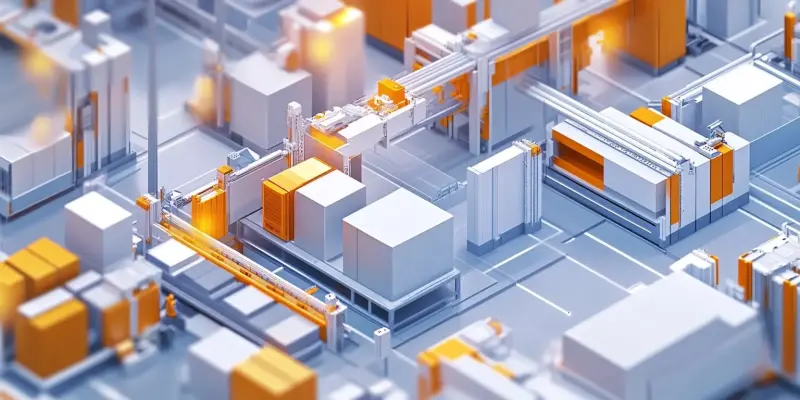The integration of artificial intelligence (AI) with robotic process automation (RPA) marks a new era in business automation. RPA, developed as a reliable tool for automating repetitive and rule-based tasks, has now found a powerful ally in AI, enhancing its capabilities manifold. This powerful synergy offers businesses a more comprehensive and adaptable approach to optimizing operations. By integrating AI, RPA systems are no longer limited to basic task automation but can perform more intelligent and dynamic functions, fundamentally transforming how enterprises operate across various sectors.
The Current Landscape of RPA and AI
Businesses have been leveraging RPA to streamline various operations, such as data entry, document processing, and inventory management. While RPA’s efficiency in handling repetitive tasks is widely acknowledged, its limitations in dealing with unstructured data and learning-based tasks have been a persistent challenge. RPA excels in predefined, rule-based activities but often struggles when faced with exceptions or the need for contextual understanding.
The rise of AI, specifically in areas like natural language processing (NLP) and machine learning (ML), provides a much-needed evolution in perceptions and applications of RPA. By embedding AI into RPA systems, businesses can surpass these limitations, paving the way for more intelligent and dynamic automation solutions. This integration allows RPA to process and analyze unstructured data, learn from interactions, and even make real-time decisions, thus introducing a new dimension to business automation that aligns more closely with AI’s advanced capabilities.
Real-World Applications and Success Stories
Several industries have already witnessed the transformative potential of AI-driven RPA. In banking, for instance, client onboarding times have dramatically reduced, and loan eligibility can now be assessed swiftly, thanks to the seamless integration of AI with RPA systems. Enhanced automation in these areas not only cuts down on processing time but also minimizes human error and improves compliance with regulatory requirements.
In supply chain management, enhanced automation has led to more efficient tracking and inventory control. Utilizing AI-driven RPA, businesses can predict demand more accurately, manage stock levels effectively, and respond to changes in the supply chain with greater agility. These advancements illustrate how AI-driven RPA not only optimizes routine tasks but also supports more complex decision-making processes. As a result, businesses can respond more agilely to market changes and evolving customer needs, ultimately improving service delivery and operational efficiency.
Addressing Skepticism and Limitations
Despite the evident benefits, some skepticism remains regarding RPA’s true transformative capabilities. Critics often argue that RPA is a mere “shortcut” to automation, lacking the sophistication and adaptability of AI-driven systems. This notion stems from early RPA implementations which were limited to structured, rule-based tasks, thus missing out on the potential for broader, more intelligent automation.
However, integrating AI into RPA mitigates these concerns significantly. Augmented RPA can learn from interactions, handle exceptions, and process unstructured data, transforming it from a basic automation tool to a robust, intelligent system that aligns closer to AI’s potential. This advanced form of RPA, enhanced by AI, is capable of more than just repetitive task automation; it can now adapt, learn, and improve over time, offering a much more sophisticated solution to enterprises seeking to optimize their operations.
The Complementary Relationship: RPA as the Body, AI as the Brain
Understanding the symbiotic relationship between RPA and AI is crucial for grasping the full potential of intelligent automation. While RPA acts as the operational body, executing predefined tasks across varied systems, AI functions as the brain, providing the cognitive power to make decisions and solve complex problems. This analogy highlights the complementary nature of the two technologies, each enhancing the other’s strengths while mitigating their respective weaknesses.
This complementary relationship amplifies the capabilities of both technologies, allowing for the automation of more intricate and variable processes. For instance, businesses can now leverage predictive maintenance, where AI forecasts equipment failures before they happen, and RPA executes preventive measures. Enhanced fraud detection is another area where this synergy shines, with AI identifying suspicious patterns and RPA automating the response actions. These sophisticated tasks, once thought to be beyond the reach of traditional automation, are now becoming standard practices in forward-thinking enterprises.
Implementation Strategies and Practical Considerations
The combination of AI with RPA ushers in a groundbreaking phase in business automation. Traditionally, RPA has served as a steadfast tool for automating repetitive, rule-based tasks. However, the incorporation of AI has significantly amplified RPA’s capabilities. This robust synergy presents businesses with a more thorough and flexible method for streamlining operations. With AI integration, RPA systems transcend basic task automation, enabling them to execute more sophisticated and adaptive functions. This evolution profoundly changes how companies operate across various industries, offering a level of efficiency and intelligence previously unattainable. By harnessing the power of AI, businesses can now automate complex processes, make better-informed decisions, and respond more quickly to changing conditions. This AI-RPA fusion ultimately leads to greater productivity, cost savings, and the ability to innovate, making it a critical component of modern enterprise strategy.

